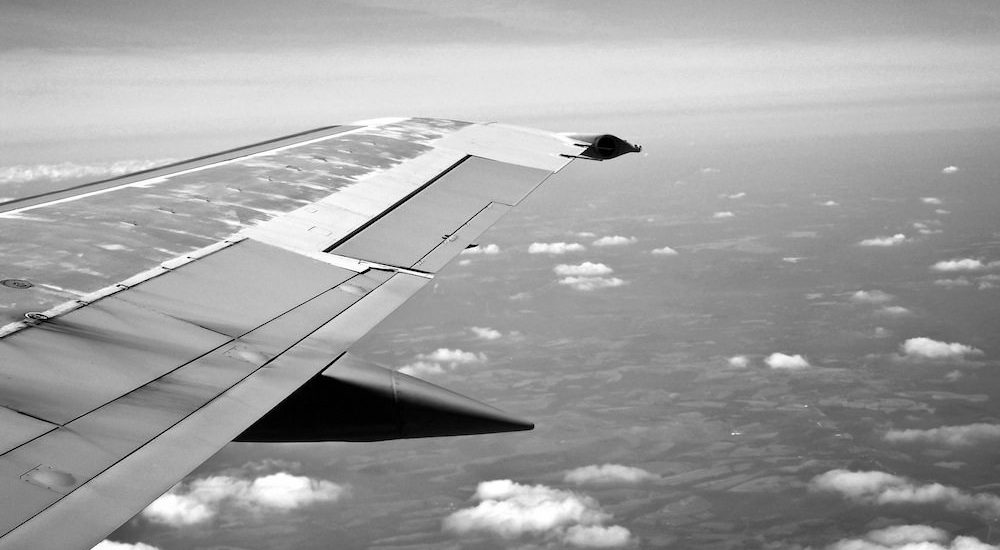A combination of layovers and a tight schedule recently led me to be on four planes in 24 hours.
It is spring, and it is the Midwest, so weather is frequently a factor, and I was fascinated to experience two of the pilots handle a similar situation in completely different ways.
Pilot One, en route to Detroit from Indianapolis, checked in when we were about 25 minutes from landing, as pilots often do. He said hello, gave us a brief update on the goings-on in Detroit, and then before he signed off, almost as an afterthought, he gave a brief, “oh by the way, it’s a bit windy going into Detroit so things might be a bit choppy as we land. Cheerio!” I didn’t think anything of it, until about five minutes later when the plane started acting more like a roller coaster, lilting this way and that like some kind of play thing for the wind. “Might be a bit choppy” would have better been described as “Strap your seatbelts tight, grab the puke bag, and hold on for dear life, cuz this landing is going to suck, people. For real.”
Pilot Two, en route from Tulsa to Atlanta, also checked in, but he did so about 45, or maybe even 50 minutes outside of Atlanta. Speaking in a calm, gentle, sing-song voice—so friendly and soothing it was downright creepy—said something to the effect of “We’ve got two major weather fronts we’re working with—those of you on the right side of the plane should see one of them here in a few minutes out your window and you’ll see what we’re dealing with. Now, we’re going to try and fly around this system which might put us into Atlanta a few minutes late, but believe me, you’ll be happy we did. Flight attendants, I’m going to go ahead and have you clean up the cabin now and get seated as quickly as possible.”
That announcement definitely made me tighten my seatbelt and study my window very intently for this dreaded front the pilot was planning to do battle with.
I couldn’t really see anything, and the flight remained smooth. Probably about ten minutes after his first announcement, Mr. Creepy Friendly, in his same Mr. Rogers’ Neighborhood voice, came back on again and said something like: “Okay, we’re beginning our initial descent and we are going to be hitting some pretty serious wind pockets. Everyone take a breath—we want to keep your blood pressure down so you all can make your connections! Now, this will be our last announcement because we’re going to be pretty busy up here for the rest of this flight.”
Uh.
By this point I was preparing for the worst sort of doom and gloom scenario, imagining Mr. Smiley signing off and screaming in the cockpit, “We’re All Going to Die!!!!!”
And yet, we landed without so much as a bump, without the slightest hint or suggestion of turbulence.
So—here you have two pilots, both facing serious wind conditions on their descent. One barely remembers to mention it to us and the other over-emphasizes the point to comic absurdity.
Which is better?
On the first flight I was like: “Oh, cool, nothing to worry about here…AHHHH!!!! What the heck is happening right now?!?!?!?!”
And on the second flight I was like, “AHHHHHHHH!!!!!!! This is going to be horrible! How will we ever make it!!!! What’ll we DOO????? Oh. Cool. We’re totally fine.”
I think it’s important to prepare ourselves, and those we are responsible for, for what’s coming down the road. Setting expectations is a really good thing, and most people like to have a sense of what’s going to happen. Preparation, to some extent, equals control.
On the other hand, if we overly prepare for the singular possibility that we’ve convinced ourselves is what will surely become reality… well, sometimes we turn out to be wrong. And maybe we’ve caused ourselves some unnecessary stress along the way. And also, haven’t we already learned over and over that control is nothing but an illusion?
In these examples, Pilot One could have definitely given us a better heads up (I’m still nauseous from that flight), and Pilot Two could have relaxed with the warnings already. Both could have remembered that there is always more than one way a thing can go, so while it’s good to prepare, it’s also good to remain open to the unexpected.
It’s essential for us to navigate this with our youth, too.
I think one of the greatest keys to resiliency is learning that balance between being prepared and being open—understanding how to prepare for both the expected and the unexpected, but also being able to adapt and go with the flow.
How can you be both prepared and open today?
For breakfast I had a cup of coffee and the remains of my children’s cereal bars.
Author Profile: @erikap
